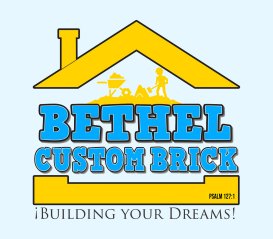Creosote is a common byproduct of wood-burning fireplaces and stoves, and while it’s a natural part of combustion, it poses significant risks to the safety and efficiency of your masonry chimney. If left unchecked, creosote buildup can lead to dangerous chimney fires, reduced airflow, and structural damage. Understanding what creosote is, how it accumulates, and the dangers it presents is key to maintaining a safe and functional chimney.
What is Creosote?
Creosote is a sticky, tar-like substance that forms when wood burns incompletely. As smoke rises through the chimney, it cools and condenses on the flue walls, leaving behind layers of creosote. This residue can vary in texture, from flaky and dry to sticky and thick, and it becomes more difficult to remove as it builds up over time.
How Does Creosote Build Up?
Several factors contribute to the accumulation of creosote in your chimney:
- 1. Burning Unseasoned or Wet Wood: Wood that hasn’t been properly dried produces more smoke and moisture, leading to increased creosote formation.
- 2. Low Fire Temperatures: Slow-burning or smoldering fires produce cooler smoke, which condenses more easily on the chimney walls.
- 3. Restricted Airflow: A clogged or improperly sized flue can reduce airflow, allowing smoke to linger and deposit more creosote.
- 4. Infrequent Cleaning: Regular chimney cleaning is essential to remove creosote buildup and prevent it from becoming a fire hazard.
The Risks of Creosote Buildup
Creosote buildup presents serious risks to both your chimney and your home. Here’s why it’s essential to address it promptly:
- 1. Chimney Fires: Creosote is highly flammable, and even a small spark or high temperatures can ignite it. Chimney fires burn intensely and can cause significant damage to the masonry, flue liner, and surrounding structures.
- 2. Reduced Efficiency: Creosote narrows the flue passage, restricting airflow and reducing the efficiency of your fireplace or wood stove. This can make it harder to start and maintain a fire.
- 3. Toxic Fumes: Creosote buildup can block the flue, causing smoke and toxic gases like carbon monoxide to back up into your home, posing health risks.
- 4. Structural Damage: Chimney fires caused by creosote can crack or collapse masonry, damage the chimney liner, and weaken the entire structure.
- 5. Increased Repair Costs: Neglecting creosote removal can lead to costly repairs, including liner replacement, masonry rebuilding, or a full chimney replacement.
Signs of Creosote Buildup
Watch for these warning signs that your chimney may have excessive creosote buildup:
- Strong Odors: A tar-like smell emanating from the fireplace or chimney.
- Dark, Sticky Residue: Visible deposits inside the firebox or on the flue walls.
- Poor Draft: Smoke backing into your home instead of rising through the chimney.
- Discolored Masonry: Dark stains on the exterior of the chimney, often caused by creosote seepage.
How to Prevent Creosote Buildup
Prevention is key to minimizing creosote accumulation and keeping your chimney safe. Follow these tips:
- 1. Burn Only Seasoned Wood: Use hardwoods like oak or maple that have been properly dried for at least six months. Avoid burning green or wet wood.
- 2. Maintain Hot Fires: Burn fires that are hot and efficient to reduce smoke and creosote formation.
- 3. Ensure Proper Airflow: Keep the damper open and ensure the flue is the correct size for your fireplace or stove.
- 4. Schedule Regular Chimney Cleanings: Have your chimney professionally cleaned at least once a year, or more often if you use your fireplace frequently.
- 5. Install a Chimney Cap: A chimney cap prevents debris, animals, and moisture from entering your chimney, reducing factors that contribute to creosote buildup.
How Creosote is Removed
Removing creosote buildup requires specialized tools and techniques to ensure safe and thorough cleaning:
- 1. Inspection: A professional chimney sweep begins with an inspection to assess the level and type of creosote buildup.
- 2. Brushing: Rotary brushes and flexible rods are used to scrub the flue walls and remove layers of creosote.
- 3. Chemical Treatments: For stubborn, glazed creosote, chemical treatments may be applied to loosen and break down the residue.
- 4. Final Cleaning and Inspection: Have your chimney professionally cleaned at least once a year, or more often if you use your fireplace frequently.
- 5. Install a Chimney Cap: After cleaning, the chimney is inspected again to ensure all creosote has been removed and the flue is safe for use.
Why Professional Help Matters
While DIY cleaning tools are available, professional chimney sweeps have the expertise and equipment to safely and effectively remove creosote. They can also identify and address other potential issues, such as cracks or blockages, during the cleaning process.
Bethel Custom Brick – Expert Chimney Maintenance in the Detroit Metro Area
At Bethel Custom Brick, we specialize in chimney maintenance services, including thorough creosote removal, inspections, and repairs. Serving the Detroit Metro area, our skilled team ensures your masonry chimney remains safe, functional, and efficient. Contact us today to schedule a chimney cleaning and enjoy the peace of mind that comes with a well-maintained chimney.


